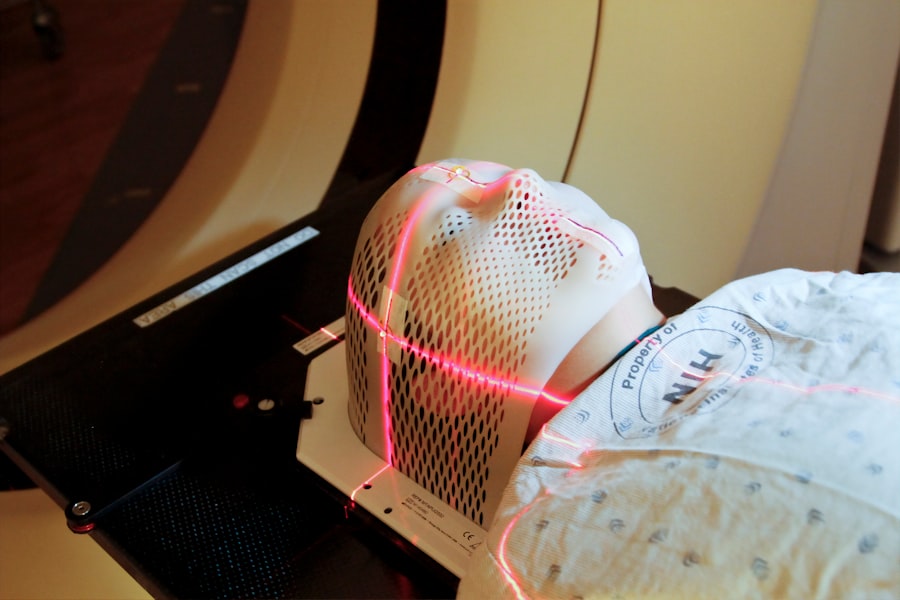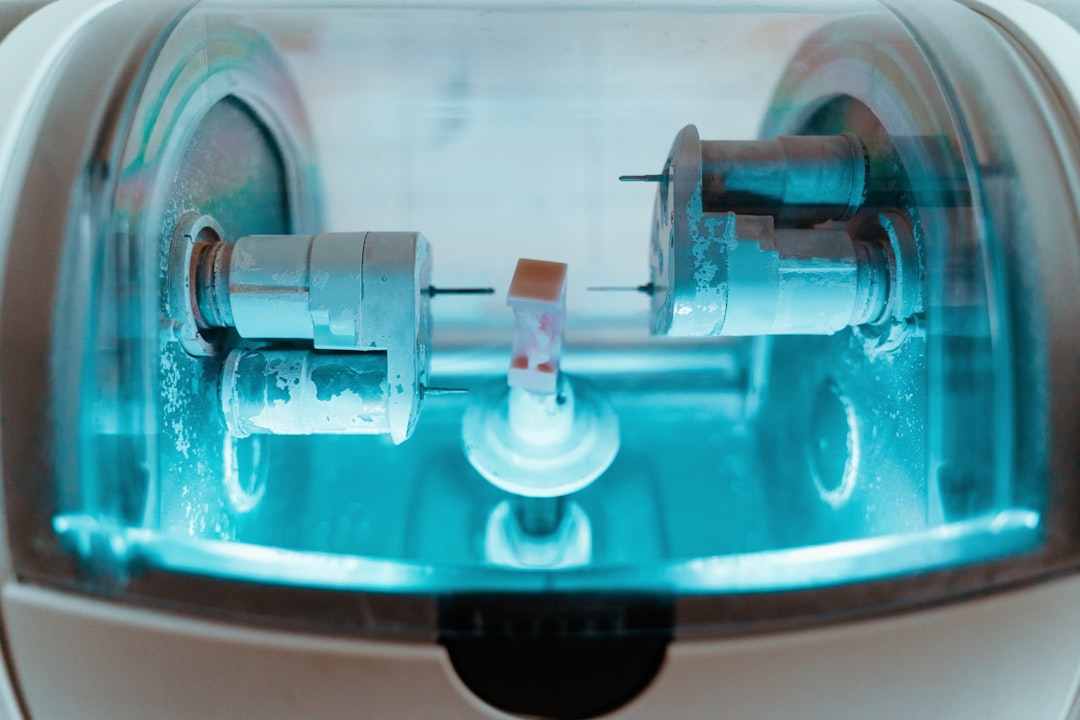When you think about Brazilian laser hair removal, you might envision a smooth, hair-free bikini line that allows you to feel confident and carefree. This advanced cosmetic procedure utilizes concentrated beams of light to target and destroy hair follicles, effectively reducing hair growth over time. Unlike traditional methods such as shaving or waxing, which can lead to irritation and ingrown hairs, laser hair removal offers a more permanent solution.
The process is designed to be efficient and precise, making it a popular choice for those seeking a long-term hair removal option. As you consider Brazilian laser hair removal, it’s essential to understand how the technology works. The laser emits a specific wavelength of light that is absorbed by the pigment in the hair follicles.
This absorption generates heat, which damages the follicle and inhibits future hair growth. The procedure is typically performed in a series of sessions, allowing for optimal results as hair grows in cycles. By targeting hair during its active growth phase, you can achieve smoother skin and reduce the frequency of unwanted hair regrowth.
Key Takeaways
- Brazilian laser hair removal targets hair in the bikini area, providing long-lasting results.
- Factors affecting the number of treatments needed include hair color, thickness, and skin tone.
- Typically, 6-8 treatments are required for optimal results in Brazilian laser hair removal.
- Consistency in treatment sessions is crucial for achieving the best outcomes.
- To maximize effectiveness, avoid sun exposure and follow pre and post-treatment care instructions.
Factors Affecting the Number of Treatments Needed
Hair Type and Color
One of the most critical elements is your hair type and color. Darker hair tends to respond better to laser treatment because the contrast between the pigment in the hair and your skin tone allows the laser to target the follicles more effectively.
Hair Growth Cycle
Another factor influencing the number of treatments is your individual hair growth cycle. Hair grows in three distinct phases: anagen (growth), catagen (transitional), and telogen (resting).
Since not all hairs are in the same phase at any given time, multiple sessions are necessary to ensure that each follicle is treated during its optimal growth stage.
Additional Factors
Additionally, hormonal fluctuations can affect hair growth patterns, which may also necessitate adjustments to your treatment plan. If you have lighter hair or a darker skin tone, you may need additional sessions to achieve similar results, as the laser may struggle to differentiate between the hair and skin.
The Typical Number of Treatments Required
On average, most individuals require between six to eight sessions for optimal results with Brazilian laser hair removal. However, this number can vary based on personal factors such as hair type, skin tone, and hormonal influences. Some people may find that they achieve satisfactory results in fewer sessions, while others may need additional treatments to reach their desired level of smoothness.
It’s important to have realistic expectations and understand that achieving permanent hair reduction is a gradual process. During your initial consultation, your practitioner will assess your unique situation and provide a more tailored estimate of how many sessions you might need. They will consider factors such as your skin type, hair density, and previous hair removal methods you’ve used.
By setting clear goals and understanding the typical treatment timeline, you can better prepare yourself for the journey ahead and maintain motivation throughout the process.
The Importance of Consistency in Treatment
| Consistency in Treatment | Importance |
|---|---|
| Improved Patient Outcomes | Consistent treatment leads to better health outcomes for patients. |
| Reduced Risk of Complications | Consistent treatment reduces the risk of complications and adverse events. |
| Enhanced Patient Satisfaction | Consistent treatment improves patient satisfaction and trust in healthcare providers. |
| Effective Disease Management | Consistent treatment helps in effectively managing chronic diseases and conditions. |
Consistency is key when it comes to Brazilian laser hair removal. Adhering to your treatment schedule is crucial for achieving the best possible results. Each session builds upon the last, targeting new hairs as they enter the anagen phase.
If you miss appointments or delay treatments, you may find that some hairs continue to grow, leading to uneven results and prolonging the overall process. Moreover, maintaining a consistent schedule helps your practitioner monitor your progress effectively. They can adjust settings or recommend additional treatments based on how your skin and hair respond to the procedure.
By committing to a regular treatment plan, you not only enhance your chances of success but also ensure that you are making the most of your investment in this long-term solution.
Tips for Maximizing the Effectiveness of Brazilian Laser Hair Removal
To maximize the effectiveness of your Brazilian laser hair removal treatments, there are several tips you can follow. First and foremost, it’s essential to avoid sun exposure before and after your sessions. Tanning can increase the risk of complications and may affect how well the laser targets your hair follicles.
If you have been exposed to sunlight, be sure to inform your practitioner so they can adjust their approach accordingly. Additionally, it’s advisable to refrain from waxing or plucking hairs in the weeks leading up to your treatment. These methods remove the entire hair shaft, which means there will be no follicle for the laser to target during your session.
Instead, shaving is recommended as it leaves the follicle intact while removing visible hair above the skin’s surface. Following these guidelines will help ensure that each session is as effective as possible.
Potential Side Effects and Risks to Consider

While Brazilian laser hair removal is generally considered safe, it’s important to be aware of potential side effects and risks associated with the procedure. Common side effects include temporary redness, swelling, or discomfort in the treated area. These symptoms typically subside within a few hours or days following treatment.
However, some individuals may experience more severe reactions such as blistering or changes in skin pigmentation. To minimize risks, it’s crucial to choose a qualified practitioner who uses FDA-approved equipment and follows safety protocols. During your consultation, don’t hesitate to ask about their experience and any potential side effects specific to your skin type or medical history.
Consultation and Customized Treatment Plans
Before embarking on your Brazilian laser hair removal journey, scheduling a consultation with a qualified practitioner is essential. During this initial meeting, you will have the opportunity to discuss your goals, ask questions, and learn more about what to expect from the procedure. Your practitioner will evaluate your skin type, hair color, and medical history to create a customized treatment plan tailored specifically for you.
A personalized approach ensures that your treatment is both safe and effective. Your practitioner may recommend specific settings for the laser based on your unique characteristics and may also provide guidance on pre-treatment care and post-treatment maintenance. By establishing a strong foundation during this consultation, you can feel confident moving forward with your treatment plan.
Maintenance and Follow-Up Treatments
Once you have completed your initial series of Brazilian laser hair removal sessions, maintenance becomes an important aspect of preserving your results. While many individuals experience significant hair reduction after their initial treatments, some may still notice occasional regrowth over time. To address this, follow-up treatments are often recommended every six months to a year.
These maintenance sessions help ensure that any remaining hairs are effectively targeted before they have a chance to grow back significantly. Additionally, regular follow-ups allow your practitioner to assess your skin’s condition and make any necessary adjustments to your treatment plan based on how well you’ve responded thus far. By committing to ongoing maintenance, you can enjoy long-lasting results and maintain that smooth, confident feeling that comes with Brazilian laser hair removal.
In conclusion, Brazilian laser hair removal offers an effective solution for those seeking long-term hair reduction in sensitive areas. By understanding the process, factors affecting treatment needs, and maintaining consistency throughout your sessions, you can maximize your results while minimizing potential risks. With proper consultation and personalized care from a qualified practitioner, you can embark on this journey with confidence and achieve the smooth skin you desire.
If you are considering Brazilian laser hair removal treatments, you may want to check out this article on how to customize your interests when it comes to laser hair removal here. This article can help you understand the different options available and tailor your treatment plan to suit your specific needs. Additionally, you may find this article on fashion and home tips related to laser hair removal here helpful in preparing for your treatments and maintaining smooth, hair-free skin.
FAQs
What is Brazilian laser hair removal?
Brazilian laser hair removal is a cosmetic procedure that uses concentrated beams of light to remove unwanted hair from the bikini area. It is a popular choice for those looking for long-term hair reduction in the pubic region.
How many Brazilian laser hair removal treatments will I need?
The number of Brazilian laser hair removal treatments needed varies from person to person. On average, most individuals require 6-8 sessions to achieve optimal results. However, some may need more or fewer treatments depending on their hair type, skin color, and the area being treated.
How far apart should Brazilian laser hair removal treatments be scheduled?
Typically, Brazilian laser hair removal treatments are scheduled 4-6 weeks apart. This allows the hair to be in the active growth phase, which is necessary for the laser to effectively target and destroy the hair follicles.
What factors can affect the number of Brazilian laser hair removal treatments needed?
Several factors can influence the number of Brazilian laser hair removal treatments needed, including hair color, hair thickness, skin color, hormonal imbalances, and genetics. Individuals with lighter skin and darker, coarser hair tend to respond best to laser hair removal.
Are touch-up treatments necessary after completing a series of Brazilian laser hair removal sessions?
After completing a series of Brazilian laser hair removal sessions, some individuals may require occasional touch-up treatments to maintain the results. The frequency of touch-up treatments varies from person to person and is influenced by factors such as hormonal changes and aging.






